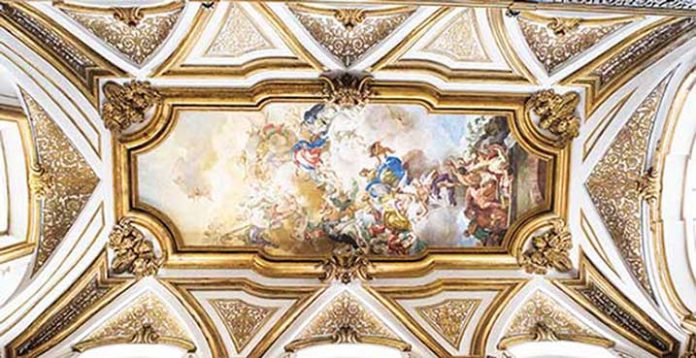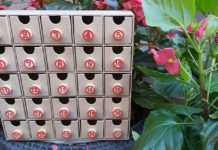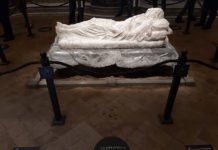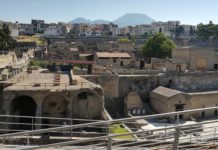NEAPOLITAN MUSEUMS TO VISIT: SAN DOMENICO MAGGIORE. In the heart of the Historical Center of Naples, the citadel of the Dominican friars, wanted by King Charles II of Anjou, the pantheon of the Aragon sovereigns. St. Tommaso d’Aquino and Giordano Bruno lived here and here, artists such as Tiziano, Caravaggio, Raffaello, Giuseppe de Ribera, Tino di Camaino, Francesco Solimena, Luca Giordano, Luigi Vanvitelli, Domenico Vaccaro, Cosimo Fanzago and Mattia Preti, have also left their marks. You can see a extremely rare Salvator Mundi of Leonardian school.
Eight centuries of art and history all enclosed in a stone casket. Visiting the monumental complex of San Domenico Maggiore, is an extremely suggestive experience. A jump back in time to rediscover one of the many faces of Naples. Here, halfway between the Lower Decumano and the Major Decumano, in the heart of the historical center of Naples, which has been declared World Heritage, many personalities have passed such as Giordano Bruno, Tommaso d’Aquino, Giovanni Pontano.
Philosophers, humanists, fathers of the Church. Each, has left his sign in one of the most important churches in Southern Italy. A multitude of known and lesser known artists such as Tiziano, Caravaggio, Raffaello, Giuseppe de Ribera, Tino di Camaino, Francesco Solimena, Luca Giordano, Luigi Vanvitelli, Domenico Vaccaro, Cosimo Fanzago and Mattia Preti have all left traces of their art in this Church.
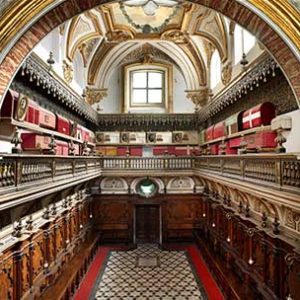
Built between 1283 and 1324 in Gothic style, at the behest of King Charles II of Anjou, who financed the project (then entrusting it to the care of the Dominican friars), from the Renaissance, the complex of San Domenico Maggiore, with its church and the adjacent Convent, has represented the fulcrum of Naples, one of the “privileged places” of the nascent Kingdom. This location in which the history of the young state was shaped, was also thanks to the choice of the kings of Aragon in choosing to build the religious complex, the dynastic pantheon. In fact there are to be found some guarded arches on the balconies of the Sacristy which was frescoed by Francesco Solimena: 38 wooden boxes sumptuously covered with silks, brocades or other precious fabrics, arranged on two overlapping rows, containing a series of 45 coffins of royals and nobles linked to the historic Spanish family, are also to be found.
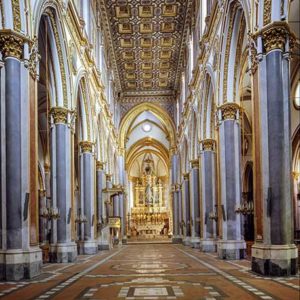
The majestic basilica, was transformed by Vaccaro, together with the adjacent convent, into one of the emblems of the Neapolitan Baroque. This edifice has a particularity: the opening to Piazza San Domenico Maggiore is by the apse and not by the main facade of the building. This is because the open square with its famous obelisk was realized later. From the square, one can access the church through a large staircase wanted by Alfonso I of Aragon which connects the pre-existing Romanesque church of San Michele Arcangelo a Morfisa (incorporated into the complex too)to the building in which the Dominicans had found hospitality when they arrived in Naples in 1231. This ramp leads to the right transept of the basilica while another entrance placed on the street level, with the center of the rear façade, under the fifteenth-century balcony, where the Carafa coats of arms stand, is connected directly with the Guevara di Bovino chapel (or “Succorpo”) , right at the apse.
The main entrance of San Domenico Maggiore opens up instead to the north, in vico San Domenico Maggiore, on the right side of the square, directly in the courtyard of the convent. It is advisable to enter from here to experience the majestic entry into the basilica. The inside of the church – in which stands a large organ with 1,640 pipes made by Neapolitan master violin makers – is in fact nothing short of glitzy: an authentic riot of well-assembled colors, with marble, blue and gold that stand out wonderfully, in perfect Baroque style. The coffered ceiling has in its center the emblem of the Dominicans and, at the four corners, stand the arms of the house of Aragon and the Spanish crown.
Under the three naves in which the church is subdivided, are to be found the noble chapels: twenty-seven in all. Among these, in particular, the second one, also called “The Chapel of frescos” or “Brancaccio“, is the only one in the whole building to preserve a cycle of frescoes dating back to the Angevin era and to the period of construction of the religious temple. Starting from 1308, they were realized by the Roman painter Pietro Cavallini. Also worthy of note is the sixth chapel, a sort of pantheon of the Carafa family, known as the “Cappellone del Crocefisso”. This space once belonged to the chapel of San Nicola and was an integral part of the old fourteenth-century church of San Michele Arcangelo a Morfisa. It hosts precious paintings and various sepulchral monuments and a reproduction of the original thirteenth-century painting of the Crucifix (today preserved in the convent) that, according to tradition, in 1273, seems to have spoken to St. Thomas Aquinas while he was praying , telling him the following words: “Thomas you wrote well of me. What reward do you want? “. “Nothing but you, Lord” was the response of the theologian who wrote in vernacular and was a point of connection between Christianity and classical philosophy, who finally wrote the third part of the Summa Theologìae.
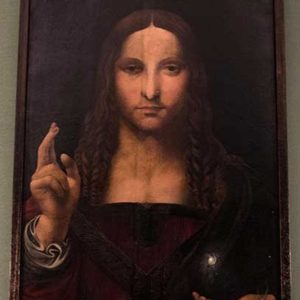
In addition to the Sacristy, of the newborn Museo Doma, it is worth paying a visit to the seventeenth-century Sala degli Arredi Sacri, once known as the “Sala del Tesoro”, with its collection of vestments and sacred objects of great historical, artistic and cultural value. It also holds the precious clothes of the sovereigns and noble Neapolitans found in the tombs in the nearby Sacristy. It is also worth mentioning the “Muscettola chapel” where it is possible to admire an enigmatic “Salvator Mundi“ of Leonardian school, dating back to the first decade of the 16th century, very similar to the one recently auctioned for 450 million dollars (click here to booking online).
The convent, which is an integral part of the complex of the Dominican fathers, is accessed from the entrance of Vico San Domenico. Developed on three floors, the building tells, through its paintings, its furnishings and its works, events that have written not only the history of Naples, but also that of the whole of Italy. Stories that lead to the birth of the Neapolitan University, which has had its headquarters here for centuries, but also to more recent events (during the 1990s the monastery housed the rooms of the former Court of Assizes and here was “hosted” the boss Raffaele Cutolo during his trial).
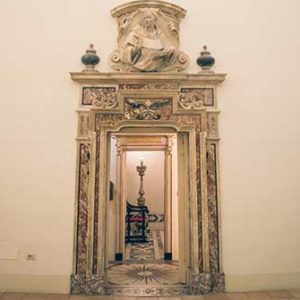
In the convent, as previously mentioned, lived for many years the friar Tommaso d’Aquino, theologian and doctor of the Church, his cell of which can now be visited, with access to the Doma Museum, where sacred objects belonging to the Holy philosopher exponent of the Scholastic and defined Doctor Angelicus are on display.
Subject to several restorations, the convent of San Domenico Maggiore reopened its doors to the public in 2012 and today is divided into several areas, one part is still used by the friars, another hosts a high school and another, with the Hall of the Chapter, is of the City of Naples.
SAN DOMENICO MAGGIORE MONUMENTAL COMPLEX. DOMA MUSEUM
Piazza San Domenico Maggiore 8 / A
Doma Museum, complete route:
Aragonese Arches, 16th century clothing collection, Sacristy, Hall of sacred furnishings, Salvator Mundi, Corridor of St. Thomas, Cell of St. Thomas.
Full price: € 7.00 – Reduced price: € 5.00 – Groups and Schools: € 5.00
Click here to booking online: shop.visitaresandomenicomaggiore.it
Open every day (closed decembre 25th): 10.00am – 6.00pm with guided tours
Tel. + 39 081 459188 – +39 333 863 89 97
www.museosandomenicomaggiore.it
Email: domanapoli@gmail.com
PIAZZA SAN DOMENICO MAGGIORE
The Ground zero of the historical center
The back of the apse of the Basilica of San Domenico Maggiore overlooks the scenic Piazza San Domenico Maggiore. It is one of the most characteristic and romantic of old Naples, with its obelisk surmounted by the bronze statue of the saint. The obelisk is surrounded, as in a magnificent setting, by the large palaces of the Del Balzo families (later inhabited by the famous animator of the Baroni Conjure, Antonello Petrucci), the Casacalenda, the Corigliano, the Sansevero (home of the di Sangro family, to which belonged the famous Raimondo di Sangro, to whom we owe the embellishment of the famous Cappella Sansevero, notable for his works of art)
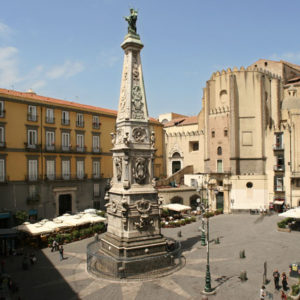
Piazza San Domenico Maggiore is the gateway to the lower Decumano. It defines the exact center of the historic perimeter of Naples and revolves around the obelisk of San Domenico, ex voto of the Neapolitans for a plague epidemic averted in 1656. The spire, where two double-tailed sirens emerge at the top, inspired the name of the Basilica which Charles II of Anjou erected between 1283 and 1324. It was decided to erect it on the occasion of the famous plague of 1656. The works began two years later according to the sketches by Francesco Picchiatti (1619-94) or, according to others, such as Cosimo Fanzago (1593-1678). The works during its erection was interrupted, to be resumed in the times of Charles of Bourbon under the direction of Domenico Antonio Vaccaro (1681-1750), who brought them to an end in 1737. Rich in marbles, bas-reliefs, medallions and statues, the so-called spire of San Domenico ends with a pyramid surmounted by a valuable bronze statue of the saint, executed according to the design and assistance of the same Vaccaro.
The square is the crossroads of the ancient Neapolitan Center, where Spaccanapoli meets Mezzocannone, the university street. From here one can reach San Gregorio Armeno, the street of cribs. It was from here that used to pass Prince Raimondo di Sangro used to pass, to get to his laboratory, which was adjacent to the family chapel, inside of which, is the famous Veiled Christ. And it was here, in 1590, that the walls of Palazzo Sansevero witnessed a frightening and bloody story: the murder of Maria D’Avalos and her lover Fabrizio Carafa, caught in flagrant adultery by the husband of the beautiful princess, the madrigalist Carlo Gesualdo. From that day, the legend tells of the ghost of the woman who wanders, ethereal and suffering, between the obelisk and the portal of the palace in search of her tragically lost love.

 Italiano
Italiano

